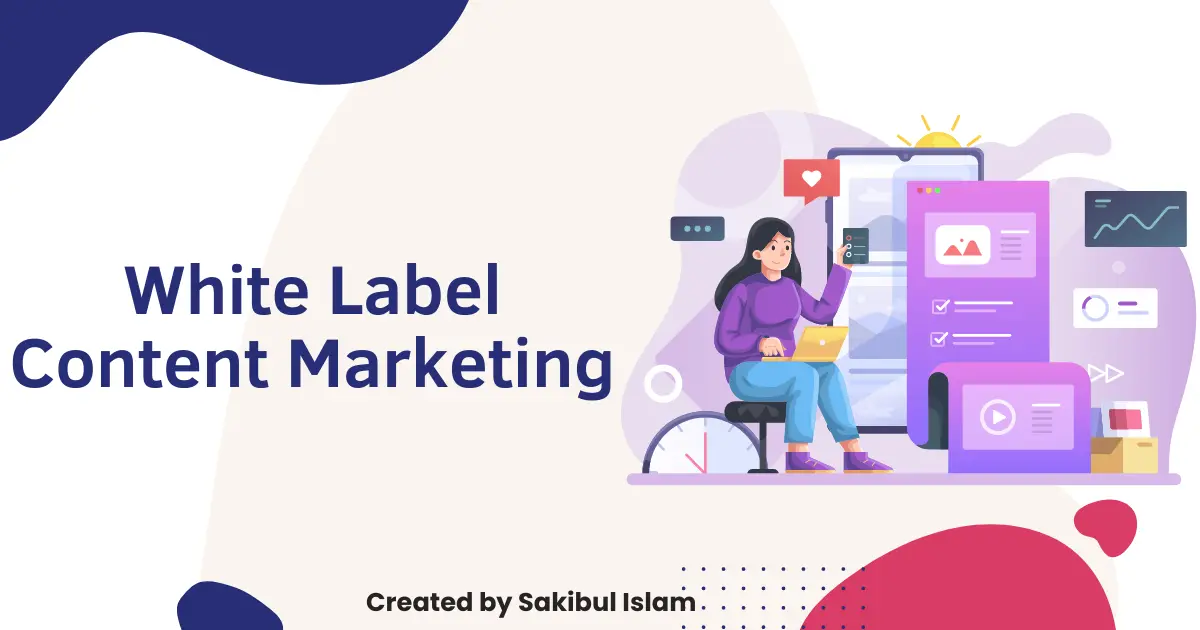Lead generation is the method of acquiring probable customers or “leads” for your business. It is a key component of digital marketing, as it helps businesses to attract and convert leads into customers.
There are a number of methods to generate leads, such as through online advertising, social media, search engine optimization (SEO), or providing content that is valuable to potential customers. Once a lead is generated, businesses can then use lead nurturing strategies to convert the lead into a customer.
Lead generation is an important part of growing a business, as it helps to increase sales and revenue. If you’re looking to grow your business, then consider implementing a lead generation strategy.
Do you have any idea of what lead generation is in digital marketing and how it affects the present era? If not, we are here to bring some details for you about it. So why late? Let’s begin with it.
Hello, I’m Sakibul Islam. I’m a digital marketer. Today I will discuss “What Is Lead Generation In Digital Marketing” Please read this article and give me your valuable feedback. Thank You.
What is lead generation?
Lead generation is the method of identifying and promoting potential customers for a business’s products or services. It’s a key component of inbound marketing, which seeks to draw customers in rather than push sales at them.
Source: Bython Media
The goal of lead generation is to generate more interest in a business’s products or services so that sales teams can close more deals. To do this, lead generation typically involves creating content, such as blog posts, ebooks, webinars, or free trials, that speaks to the needs of a business’s target audience.
Once this content is created, businesses must then identify where their target audience is hanging out online and promote the content to them.
Read More: Start Affiliate Marketing Without A Website
This process can be time-consuming and require a lot of trial and error to get right. But when done correctly, lead generation can be a highly effective way to grow a business.
The most important part of lead generation is follow-up. Once a lead is generated, it is important to contact the lead and begin the process of converting them into a customer. This can be done through a number of means, including email, phone calls, and face-to-face meetings.
How can lead generation be used in Digital Marketing?
Lead generation is the process of acquiring potential customers or clients for a business. It can be done via a variety of digital marketing channels, such as (SEO) search engine optimization, content marketing, (PPC) pay-per-click, advertising, social media marketing, and email marketing.
The goal of lead generation is to create interest in a product or service so that potential customers will provide their contact information, typically through a form on a website or landing page. This contact information can then be used to follow up with the potential customer and close the sale.
Read More: Start Blogging And Earn Money
It is an important part of any digital marketing strategy because it helps businesses to find new customers and grow their sales.
It is especially important for small businesses and businesses that are new to digital marketing, as they may not have a large customer base to start with.
There are a number of ways to generate leads, but some of the most common and effective methods include SEO, content marketing, PPC advertising, and social media marketing.
👉 SEO
SEO is the process of optimizing a website to rank higher in search engine results pages (SERPs). This can be done by optimizing the website content, structure, and code, as well as building backlinks to the website from high-quality websites.
👉 Content marketing
Content marketing is the process of creating and dispersing useful, applicable, and constant content to attract and retain an obviously defined audience — and, finally, to drive good customer action.
👉 PPC advertising
PPC advertising is a form of online advertising in which businesses pay to have their ads displayed on search engines and other websites. When a potential customer clicks on one of these ads, the business pays a fee to the search engine or website.
👉 Social media marketing
Social media marketing is the process of using social media platforms to promote a product or service. This can be done through creating and sharing content, running ads, and conducting giveaways or contests.
👉 Email marketing
Email marketing is the process of sending messages to potential or current customers through email. This can include newsletters, product announcements, sales pitches, and more.
Lead generation is a vital part of any digital marketing strategy. By using one or more of the above methods, businesses can reach new customers, increase their sales, and grow their business.
What are the best practices for lead generation?
There is no one-size-fits-all answer to this question, as the best practices for lead generation will vary depending on your industry, target market, and product or service. However, there are some general best practices that can be followed in order to generate more leads and convert them into customers or clients.
👉 Define your target market.
The first step in generating leads is to identify your target market. This will help you determine where to focus your efforts and what type of leads you are looking for.
👉 Create compelling content.
Once you know who your target market is, you need to create content that will appeal to them and make them want to learn more about your product or service. This content can be in the form of blog posts, articles, eBooks, or any other type of content that is informative and interesting.
👉 Use Social Media.
Social media is a great way to reach out to potential leads and connect with them on a personal level. Use social media to share your content, answer questions, and engage with your target market.
👉 Use lead capture forms.
In order to actually generate leads, you need to capture their contact information. This can be done by using lead capture forms on your website or blog. Include a form on every page of your site, and make sure it is prominently placed and easy to fill out.
👉 Provide something of value.
In order to get people to fill out your lead capture form, you need to offer something of value in return. This could be a free report, eBook, coupon, or anything else that would be helpful to your target market.
👉 Follow up.
Once you have captured a lead’s contact information, it is important to follow up with them in a timely manner. Send them an email, give them a call, or even mail them a brochure. The key is to stay in touch and build a relationship with your leads.
By following these best practices, you can generate more leads and convert them into customers or clients.
Common lead generation mistakes in digital marketing
Digital marketing is a great way to generate leads for your business. However, there are some common mistakes that many businesses make when they are trying to generate leads through digital marketing.
One of the most common mistakes is not having a clear call to action. Your call to action should be clear and concise, and it should be easy for potential leads to understand what you want them to do.
Read More: Blog On Facebook And Earn Money
Another common mistake is not nurturing your leads. Once you have generated a lead, it is important to follow up with them and build a relationship. If you do not nurture your leads, they are likely to forget about you and move on to another business.
Finally, another common mistake is not tracking your results. It is important to track your results so that you can see what is working and what is not. If you are not tracking your results, you will not be able to improve your digital marketing strategy.
Some common lead generation challenges
There are many common lead generation challenges that businesses face. These include:
1. Lack of clarity about what a lead actually is: Without a clear understanding of what constitutes a lead, businesses may struggle to generate them.
2. Not having a target audience: A business may have a product or service that may appeal to a wide range of people, but without a target audience, it may be difficult to generate leads.
3. Lack of an effective lead generation strategy: Even if a business knows who its target audience is and what a lead is, it can still struggle to generate leads if it doesn’t have an effective strategy to do so.
4. Lack of resources: Generating leads can be a time-consuming and resource-intensive process, and businesses may not have the necessary resources to devote to it.
5. Low Conversion Rate: Even if a business generates a good number of leads, it may not convert into customers at a high enough rate to be sustainable.
6. Poor Quality Leads: A business can generate a lot of leads, but if they are of poor quality, they may not be worth pursuing.
Lead generation can be a challenge for any business, but by understanding common challenges and taking steps to address them, businesses can improve their chances of success.
Lead generation is good or bad in the digital market.
Digital marketing is all about generating leads and converting them into customers. There are various ways of generating leads, such as through social media, email marketing, and search engine optimization.
Lead generation is a process of generating interest in a product or service among potential customers. This can be done through various means, such as online ads, email marketing, or search engine optimization.
The main aim of lead generation is to create a list of potential customers who can be contacted and converted into paying customers. However, this process is not without its risks.
Read More: Digital Direct Marketing
There are a few potential risks associated with lead generation, such as:
1. Spamming: There is always the risk of potential customers being spammed with too many promotional messages and emails. This can lead to them losing interest in the product or service, and it can also damage the reputation of the company.
2. Inaccurate data: When collecting data from potential customers, there is always the risk of inaccurate or incomplete data. This can lead to marketing messages being sent to the wrong people or to people who are not interested in the product or service.
3. Time-consuming: The process of lead generation can be time-consuming, particularly if it is done manually. This can lead to frustration among the marketing team, and it can also lead to a loss of potential customers if the process is not done efficiently.
Despite the potential risks, lead generation is still a vital part of digital marketing. It is a necessary process for generating interest in a product or service, and it can also be a great way to build up a database of potential customers.
Conclusion
In short, lead generation is the process of attracting and converting strangers into prospects and customers. It’s the foundation upon which successful businesses are built. You already read this article, right?
If you read it, you know what lead generation is in digital marketing and how does it affect on our present era. We hope that this small effort will be much helpful for all of you to get an overall idea. Thank you all.
Frequently Asked Questions (FAQ)
What is lead generation in digital marketing example?
Some digital marketing lead generation examples include online ads that prompt users to click through to a landing page, online directories that list contact information for businesses in a particular industry, and email campaigns that capture potential customers’ information.
What are the 3 approaches to lead generation?
There are three approaches to lead generation: inbound, outbound, and digital. Inbound lead generation involves attracting leads through organic means such as SEO or social media.
Outbound lead generation involves actively reaching out to leads through activities such as cold calling or emailing. Digital lead generation involves using digital channels such as websites or landing pages to generate leads.
How can I generate leads fast?
There is no actual answer to this question, as the most useful way to generate leads will vary trusting on your business, products, and target market. However, some tips on generating leads quickly include using social media, running targeted ads, and offering incentives.
What are the benefits of lead generation in digital marketing?
Some benefits of lead generation in digital marketing are that it can help you reach a larger audience, it can be more cost effective than traditional marketing methods, and it also can help you track your results so you can adjust your campaigns as needed.






